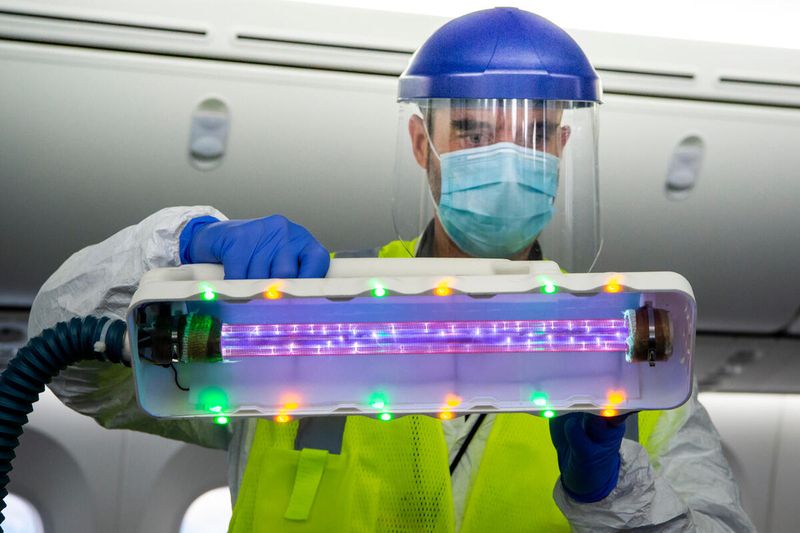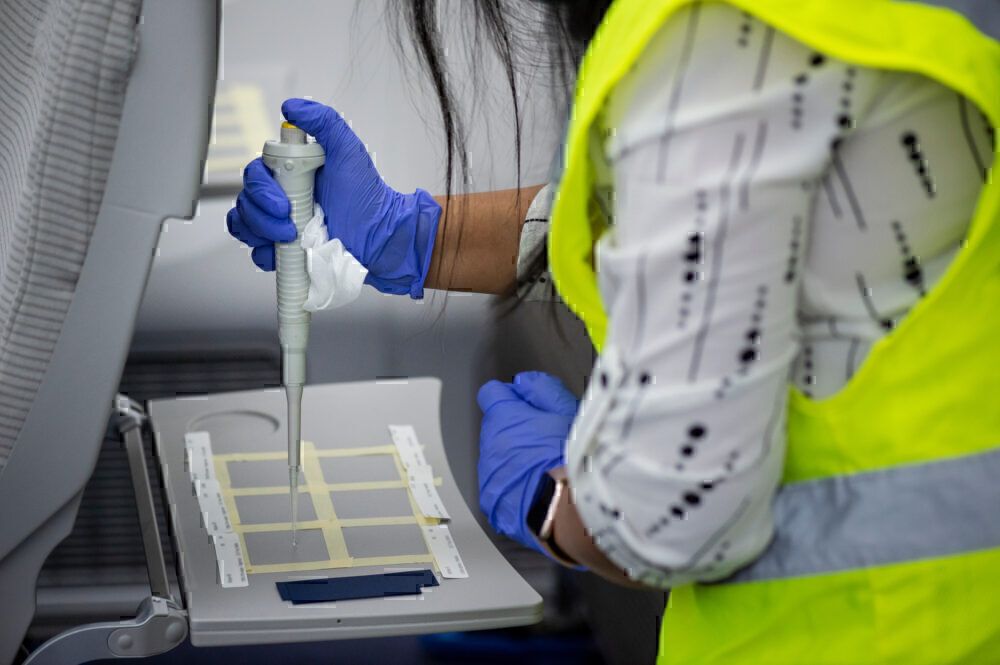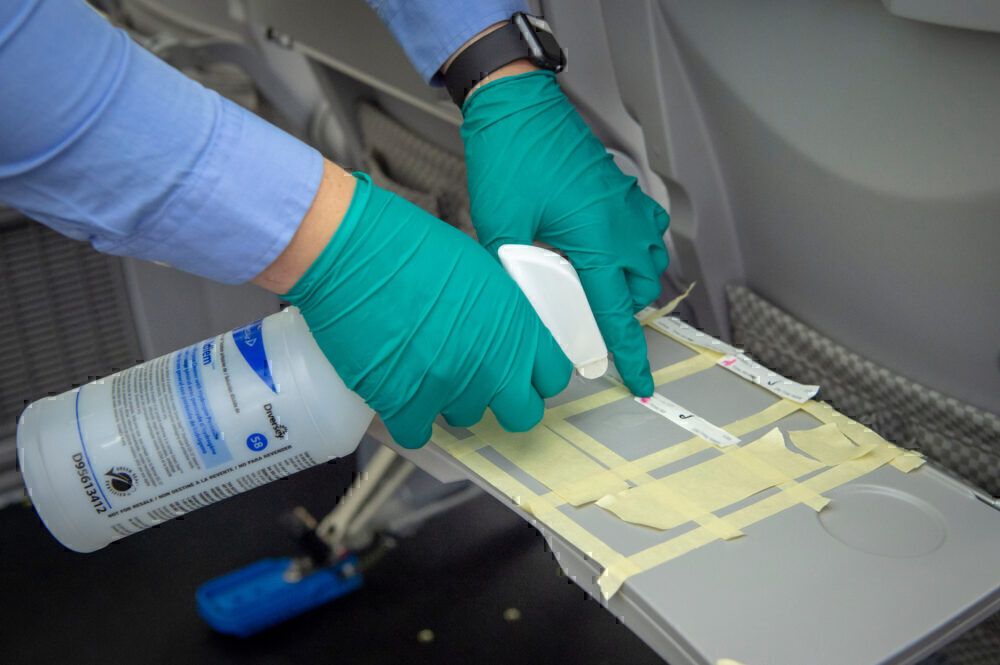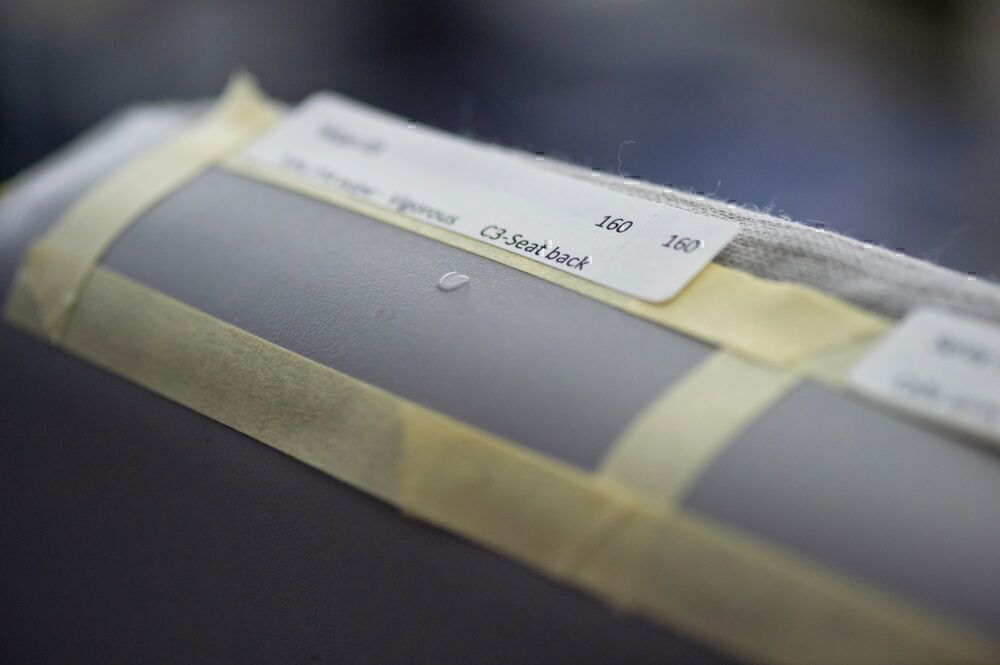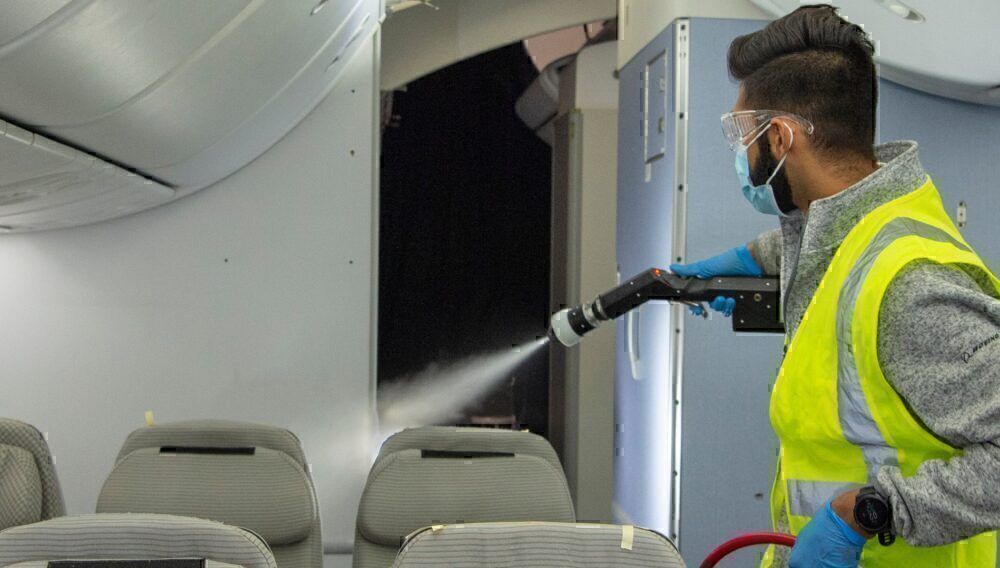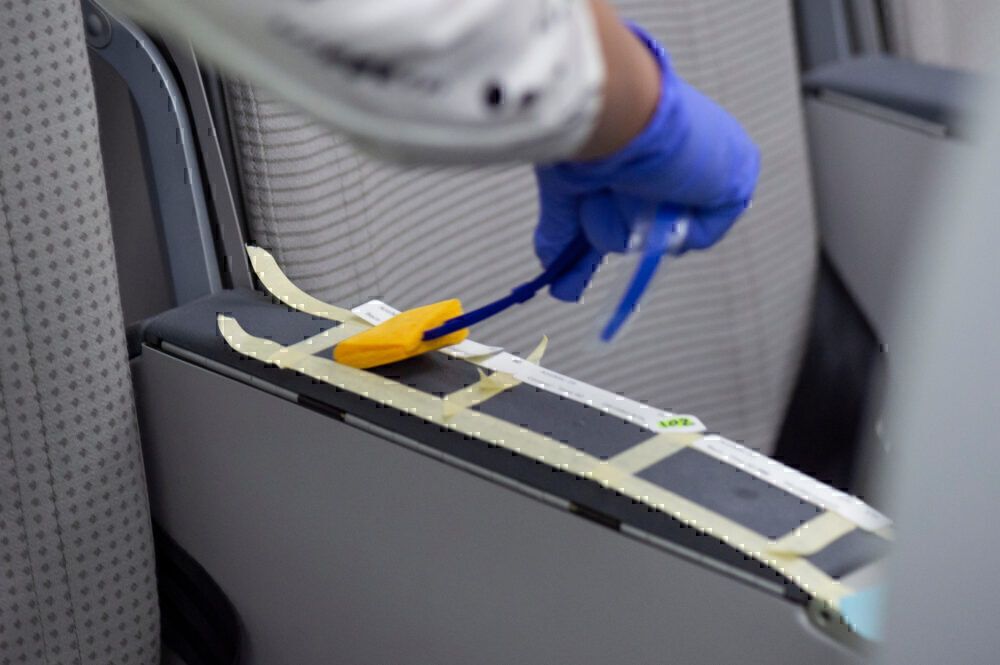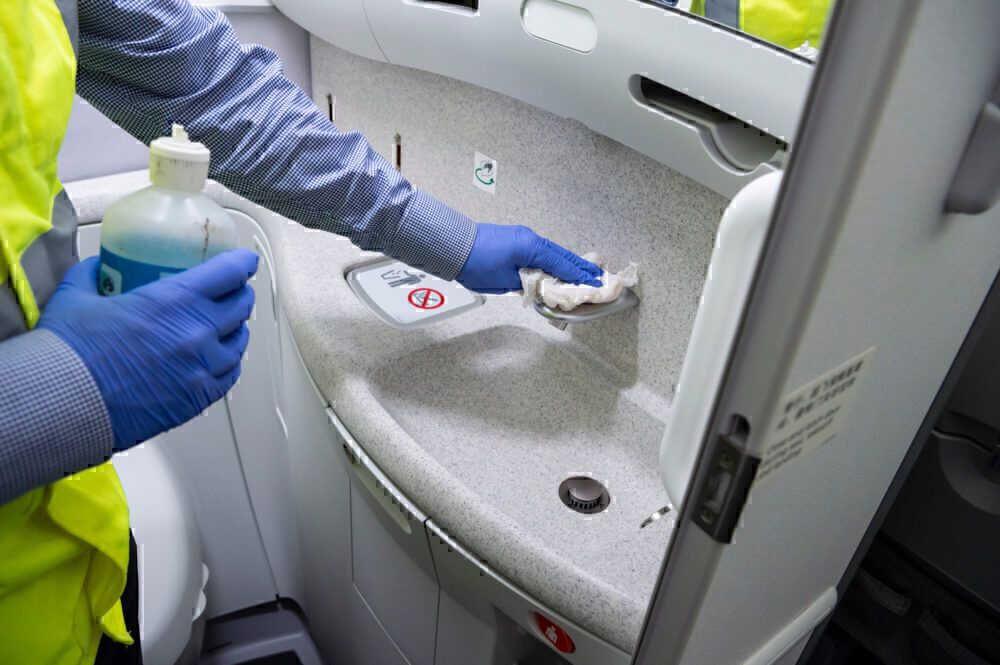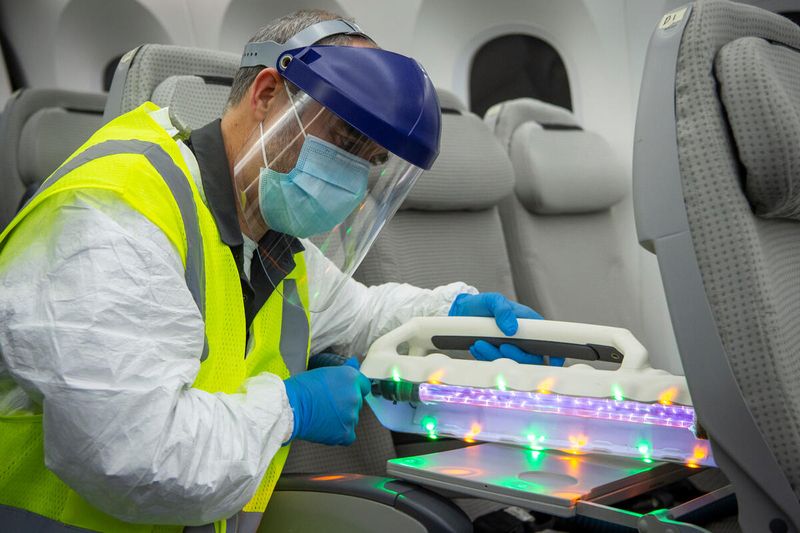As part of its Confident Travel Initiative, Boeing has tested out its cleaning methodologies using a live virus and a real aircraft. In partnership with the University of Arizona, the manufacturer trialed cleaning with chemical disinfectants, electrostatic sprayers, antimicrobial coatings, and Boeing’s ultraviolet wand. Every one of the technologies was proven to be effective at destroying the virus.
Boeing tests its cleaning methods with a live virus
Yesterday, Boeing revealed the results of a first-of-its-kind test involving releasing a live virus onto an aircraft to prove its cleaning techniques. In partnership with the University of Arizona, Boeing implanted a human-safe virus onto a 737 airplane and then subjected it to Boeing’s recommended cleaning methods.
The results were outstanding. Swabs were taken from the areas where the virus was applied, which found the recommended cleaning methods effectively removed the contamination. As the virus, known as MS2, is proven to be more resistant to removal than the virus that causes COVID-19, this is a huge vote of confidence in the measures the manufacturer is recommending for aircraft sanitization.
Stay informed: Sign up for our daily aviation news digest.
The test was all part of Boeing’s Confident Travel Initiative (CTI), which aims to support airlines in making air travel safe for crew and passengers. Mike Delaney, who leads Boeing's CTI efforts, commented,
“While these cleaning solutions had been tested in other environments, an airplane behaves differently. It was critical for us to evaluate and confirm the chemicals and techniques we recommend for our customers’ use are effective and battle-tested. By working with the University of Arizona, we were able to employ their world-renowned expertise in virology to do exactly that.”
It’s the first time a live virus test such as this has been performed on a commercial aircraft. As Boeing is providing guidance to airlines and partners to establish excellent cleaning processes, this research will give confidence that the products and processes recommended by the manufacturer really do work.
What the testing involved
The test began with a Boeing 737 mockup but then progressed onto a real 737 at Boeing Field. The research was carried out both on the ground and in flight to eliminate any confounding factors from altitude, humidity, or airflow changes.
Researchers placed one to two drops of MS2, a harmless to humans live virus, on areas which are typically high touchpoints. These included tray tables, armrests, seat cushions, stowage bins, and inside the lavatory and galley.
Each of the areas were then cleaned by a standard cleaning team who were not pre-warned of the importance of the test. The team used a combination of chemical disinfectants, electrostatic sprayers, antimicrobial coatings, and Boeing’s ultraviolet wand. Not all methods were used in all areas, just the most suitable one for that cleaning location.
The University of Arizona analyzed each area post-disinfection to determine effectiveness. The results showed various levels of effectiveness, but ultimately all the recommended products, methods, and technologies successfully destroyed the MS2 virus.
University of Arizona microbiologist Dr. Charles Gerba commented on the research, saying,
This study allowed us to test and validate, for the first time, that disinfecting solutions kill SARS-CoV-2 on an airplane. It’s important to recognize we’re not only talking about SARS-CoV-2, but also other viruses and microorganisms.”
The standard for destroying the virus was elimination of 99.99% sterilization. To make absolutely sure that the research was solid, the University of Arizona repeated the test in a laboratory environment with live SARS-CoV-2 and samples of material from the airplane. The results confirmed what the MS2 research had indicated.
Layered protection
During the presentation, Boeing reiterated the need for layers of protection to prevent COVID from being spread by air travel. This begins with stopping the virus from getting into the airport, and indeed onto the plane.
The layered approach is in line with everything seen today around air travel. Advising passengers not to travel when sick, which is standard advice across the industry, along with waiving change fees to avoid people feeling they have to travel, is the first step in the process.
From there, we have airports conducting deep cleaning of facilities. Airlines and ground service companies are inducting touchless technology, and of course, people are being encouraged to wash their hands and wear masks.
All of this together means the risk of a virus entering the plane is much reduced. However, on the rare occasion that a contagious person does step on a plane, Boeing’s proven cleaning techniques ensure the cabin is sterilized and safe for other guests.

